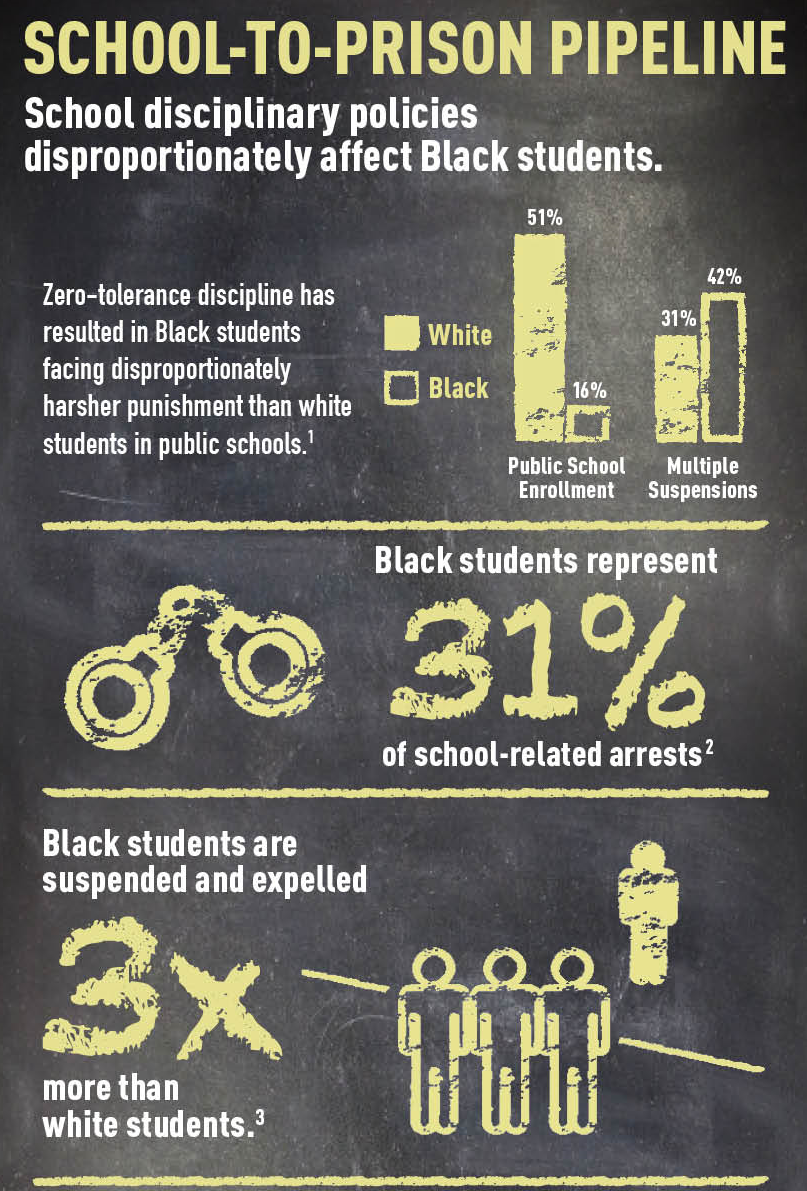School To Prison Pipeline
- Julia Coulson
- Oct 1, 2022
- 4 min read
Updated: Jun 8, 2023
What is it, and how was it created?
Imagine an invisible hand that could, at any point, grab you and take you away to await your punishment.
You could be taken away simply because you had a bad day and talked back to the wrong person at the wrong time. Or because you have a learning disability and your everyday behavior is seen as an outburst, making the wrong person uncomfortable. Or sometimes, simply the color of your skin; or how you present yourself is enough of a reason to justify you being taken away.
Now imagine being taken away over and over because you have been denied a support system or a positive outlet; or because our justice system has you stuck in a never-ending cycle of catch and release.
So, how was this invisible hand created?
Zero tolerance policies have created this invisible hand, and it’s called the School to Prison Pipeline.

While the term School to Prison Pipeline has only recently been used in the 21st century (1), the origins of the term date back to Nixon’s presidency in the 1970s and was solidified by the Reagan administration in the 1980s (2). The saying “a chain is only strong as its weakest link”; became the philosophy that is the foundation of the school-to-prison pipeline. This philosophy still lives on, and many students of minority groups are still being seen and treated as the weakest link.
Our justice system has become a never-ending cycle of mistreatment and neglect; instead of being restorative and serving as a stepping stone to a better path.
Destroying communities due to the lack of education instituted by the zero tolerance policies has led to unresolved trauma and the criminalization of poverty - poverty directly linked to a lack of resources, education, and support systems. It starts with something seemingly small such as an authority figure dress-coding a young woman of color. The action may seem small, but this simple action has now disrupted her education, her day, and her mental health. It’s the same thing when young men of color see people clutch their bags a little tighter around them. It’s the idea of treating someone as a threat no matter the circumstances that allow the pipeline to continue.
How did we get from a zero-tolerance policy to such a flawed system that is the pipeline?
The zero-tolerance policies were initially put into place as a way to “toughen up on drugs.” In reality, all the policies did was unveil the blatant racism and ableism that continues to exist in the American public education system. Students of minority groups and students with learning disabilities or mental health challenges make up the largest school-to-prison pipeline population (3).
The zero-tolerance policies have created a culture of criminalizing the behavior of many young members of minorities due to the most minor and subjective offenses.
Rather than reflecting on the behavior with the student and allowing them to learn from their mistakes, the response to address the troubling behavior typically becomes punitive, whether that be suspension, expulsion, or criminal citation. Suspending students is one of the biggest contributing factors to the school-to-prison pipeline. Removing students from the classroom as a punishment only increases their chances of dropping out and entering the never-ending cycle of the criminal justice system.
When their place of education becomes a place of judgment and punishment, where are they supposed to turn? For many schools, behavioral issues and outbursts are punished instead of investigated and treated. The weak link is simply removed rather than given services and support.

The question now becomes, how can we as a community help put an end to the school-to-prison pipeline?
The answer is not an easy one. There is still so much deep-seated racism, fear, and hate in the American education system and our justice system. Systemic change is required but does not come easily. We must end the stigma around seeking help, offering help to others, and seeking answers instead of jumping to conclusions.
Our hope is that the school-to-prison pipeline will one day be a mistake of the past, but until then, we must make strides toward breaking down the pipeline through social and restorative justice programs and social justice reform. restART studio’s art therapy program is passionate about using art therapy as a way for students to work through the mistakes they made and find a constructive outlet. Art can be a source of light and happiness, not just for ourselves but for many of those around us. Art can express things that we cannot verbalize and can help us understand and come to terms with who we are and who we want to be.
Mistakes don’t define us; we are defined by how we learn from them.
Written by Julia Coulson
restART studio Administrative Assistant
Sources:
(1) Tolley, Beth. (2020). What is the school-to-prison pipeline?, Alliance Against Seclusion and Restraint.
(3) Chiariello, Marilyn. (2013). The School-to-Prison Pipeline. Learning for Justice.
(5) Rax Babin. School to Prison Pipeline. [Cartoon]. The Sacramento Bee.







Comments